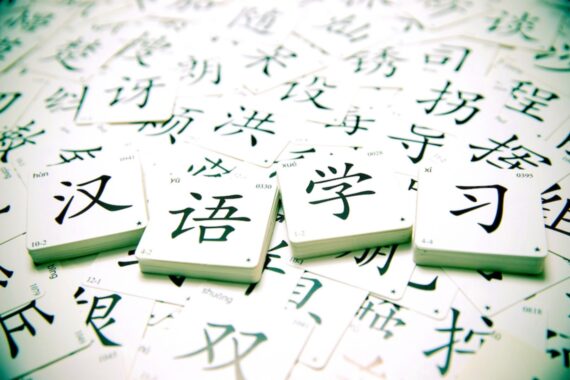Mastering Tones: Advanced Techniques for Perfect Mandarin Pronunciation

Welcome to the ultimate guide on mastering tones in Mandarin! If you’ve ever found yourself in a sticky situation, confidently saying what you thought was “I’m here to buy apples” but getting puzzled looks because you accidentally declared your undying love for ducks… well, you’re not alone.
The road to perfect Mandarin pronunciation is paved with good intentions and, occasionally, amusing mix-ups. That’s the beauty (and hilarity) of learning this fascinating language.
Tones can be tricky beasts. Get them right, and you unlock a world of clear communication. Get them wrong, and, well, you might just end up serenading poultry.
Whether you’ve been splashing about in tonal waters with the grace of a newborn giraffe or you’re just looking to polish your pronunciation to dazzling perfection, this article is for you. We’re going into the advanced techniques that will help you not just understand but master those elusive Mandarin tones. From the mysterious ways they morph meanings to the high-tech tools that can turn you from tone-deaf to tone-master, we’ve got you covered.
So, grab your favorite beverage, settle in, and let’s begin. By the end of this guide, you might just end up buying those apples after all (unless you really do love ducks, in which case, we salute you).
Understanding the basics of Mandarin tones
Before we get into the deep end of advanced tonal techniques, let’s take a moment to lay the groundwork. Think of this as warming up before a workout. You wouldn’t run a marathon without stretching first, right? Well, tackling Mandarin tones without brushing up on the basics is a similar no-go. So, let’s stretch those linguistic muscles and ensure we’re all starting on the same note — pun absolutely intended.
The four tones + neutral tone: A quick overview
Mandarin Chinese is like a melody, and each character has its own pitch. There are four main Chinese tones, each with a distinct pitch contour that can change the meaning of a word completely. And then there’s the neutral tone, the mysterious fifth member of the band, playing by its own rules.
- The first tone: Steady and high, like holding a musical note or the feeling of smoothly sailing across a calm sea.
- The second tone: Rises from middle to high, much like the inflection in your voice when you ask, “Really?” in disbelief.
- The third tone: Starts mid, dips down, then rises again, like the roller coaster of emotions when you find an extra fry in the bag. Don’t let the 3rd tone fool you.
- The fourth tone: Drops sharply from high to low, mirroring the stern tone of a parent using your full name.
- The neutral tone: Light and quick, without much emphasis, like the casual toss of a comment over your shoulder.
Understanding these tones is your first step toward mastering Mandarin pronunciation. But it’s not just about knowing them. It’s about feeling them, using them, and sometimes, getting them hilariously wrong before you get them right.
The role of tones in meaning and comprehension
Imagine walking into a shop and asking for a “māo” when you wanted a “mào.” Instead of getting that cozy hat you were pointing at, you end up with a bewildered kitten in your lap.
Yes, tones matter. A lot. Each tone can turn a word into its own doppelgänger, with meanings as different as “mother” and “horse.” It’s the difference between complimenting someone’s cooking and accidentally commenting on the cook’s speed at the racetrack.
Tones are the key to unlocking not just individual words but the entire language. They shape context, emotion, and clarity in communication. Without a solid grasp of tones, you might find yourself lost in translation, even if you’ve memorized all the vocabulary and grammar rules in the book.
Getting these basics down is more than a good start — it’s your foundation. With these fundamentals under your belt, you’re ready to get into the advanced techniques that will transform you from a tone novice to a tone wizard.
So, tighten those laces because we’re about to pick up the pace and head deeper into the art of mastering Mandarin tones.
Related Reading: Best Resources for Learning Chinese
Advanced tone practice techniques for mastering Mandarin pronunciation

Alright, you’ve got the basics under your belt, and you’re ready to up your game with some advanced tone techniques. Welcome to the major leagues of Mandarin tones. This is where the real fun begins, and by “fun,” we mean the kind that challenges you, rewards you, and sometimes makes you question your life choices — all in the pursuit of perfect pronunciation.
Let’s look into some advanced tone practice techniques that will have you mastering Mandarin tones like a pro.
Mimicry and shadowing
Think of mimicry and shadowing as the karaoke night of language learning — except here, you’re aiming to be pitch-perfect with tones rather than lyrics.
Mimicry involves listening to native speakers and then trying to replicate their pronunciation as closely as possible. Become a linguistic parrot. Find audio of native speakers, listen to a sentence, pause, and then say it back out loud. The key here is repetition and attention to detail. Try to match not just the tones but also the rhythm and emotion of the speaker.
Speech shadowing takes mimicry one step further. You listen to the audio and repeat the sentence at the same time as the speaker, trying to sync up as closely as you can. It’s like singing a duet where you’re both the lead and backup vocalist. This technique forces you to process the sounds and tones quickly, improving your auditory processing skills and reaction time.
Both tone practice techniques are incredibly effective for tuning your ear to the nuances of Mandarin tones and improving your ability to produce them accurately.
Tone pairing
Tone pairing is very much like learning to dance—you start with basic steps before you combine them into a routine. In Mandarin, certain tone combinations occur more frequently than others. Mastering these common pairs can dramatically improve your fluency and pronunciation.
Start by practicing pairs of tones in isolation, using simple two-character words or phrases. Gradually, as you become more comfortable, expand into longer sequences, maintaining focus on how the tones interact with each other. Eventually, you’ll master even the most difficult tone pairs in Chinese. This practice helps you learn the melody of Mandarin speech, ensuring your tone transitions are smooth and natural.
Using technology and apps for tone practice
These days, there’s an app for everything — including tone practice. You can use technology to give you an edge in your tone mastery quest. Apps can provide instant feedback, track your progress, and offer a vast library of examples for mimicry and shadowing.
Look for apps that specialize in pronunciation and offer detailed analysis of your efforts compared to native speakers. Some apps even use games and challenges to make tone practice more engaging. Remember, the goal is to integrate these tools into your daily practice routine, making tone practice a regular part of your language learning diet.
Incorporating tone practice into everyday life
The ultimate test of any language skill is how well you can use it in real-life situations. Here are a few ways to integrate tone practice into your daily life:
- Label your world: Stick notes on objects around your house with their Mandarin names and tones. Each time you use an item, say the name out loud, focusing on the correct tone.
- Narrate your day: Challenge yourself to narrate parts of your day in Mandarin, paying special attention to the tones. Whether you’re making coffee or writing an email, describe what you’re doing, focusing on the tones of each word.
- Engage with speakers: There’s no substitute for the real thing. Engage in language exchange with other learners, focusing on using correct tones in conversation. Online platforms can connect you with conversation partners eager to help (and maybe laugh with you at the inevitable mix-ups along the way).
- Consume Mandarin media: Immerse yourself in Mandarin through music, podcasts, and Chinese movies. Try to mimic the tones you hear, especially in songs, where the melody can help reinforce tonal patterns.
By integrating these advanced techniques into your study routine, you’ll not only improve your Mandarin tones but also deepen your overall understanding and appreciation of the language. Remember, mastering tones is a journey — one that’s filled with challenges, yes, but also with the joy of unlocking new levels of communication and connection.
Keep practicing, stay patient, and before you know it, you’ll be hitting those tones with the confidence of a native speaker. And who knows? Maybe you’ll even get those apples without any ducks getting involved.
Related Reading: The 7 Biggest Mistakes Chinese Learners Make
Common Mandarin tone challenges and solutions

Heading deeper into Mandarin tones, you’ll likely encounter a few dragons along the path—figurative ones, of course, that breathe confusion instead of fire. But as any good adventurer knows, every challenge has a solution waiting to be discovered. Let’s look at some common hurdles in the quest for tonal mastery and, more importantly, how to leap over them with grace.
Maintaining consistency across different words and contexts
One of the trickiest aspects of mastering Mandarin tones is keeping your pronunciation consistent, regardless of the word or context. It’s one thing to nail a tone in isolation and quite another to maintain accuracy mid-sentence, especially when speed and natural speech patterns come into play.
Solution: Practice, and then practice some more — but do it smartly. Start with isolated words, focusing on tone accuracy. Gradually build up to phrases and then sentences, paying attention to how your tone usage changes with speech flow. Recording yourself can be eye-opening, revealing inconsistencies you might not notice in the moment. Listen back, critique yourself gently, and adjust. Over time, consistency will become second nature.
Overcoming tone deafness
“Tone deafness” isn’t just a challenge for budding singers; it can also be a hurdle for language learners grappling with the tonal nuances of Mandarin. If distinguishing between the tones feels like trying to hear the difference between shades of blue, you’re not alone.
Solution: First, know that true tone deafness is rare. More likely, you’re just unaccustomed to listening for tone. To overcome this, immerse yourself in the sounds of Mandarin as much as possible. Use tonal listening exercises, focusing solely on tone identification without worrying about meaning. It’s like training your ear to hear the subtle differences in musical notes. With time and exposure, your brain will start to catch up, making it easier to distinguish and replicate tones.
Advanced tone practice techniques
So, you’ve got the basics down, and you’re ready to tackle the advanced league. But you find yourself stumbling when trying to integrate complex vocabulary or grammar structures with accurate tone pronunciation. We’ve seen it compared to juggling while riding a unicycle — challenging but not impossible.
Solution: At this stage, specificity in your practice becomes key. Target your practice sessions towards specific scenarios or topics, incorporating advanced vocabulary and grammar as you go. Role-playing exercises can be particularly effective, forcing you to use a variety of tones in context. Consider also working with a tutor or language partner to simulate real-life conversations, asking for feedback on your tone accuracy. Remember, the goal is not just to know the tones but to use them fluidly in everyday communication.
Like any journey worth taking, the path to mastering Mandarin tones is filled with ups and downs. But, with persistence, patience, and a bit of humor, you’ll find yourself not just walking but running along it, dodging those dragons and reaching new heights of linguistic prowess.
Related Reading: The 10 Biggest Challenges for Chinese Learners SOLVED
Tailor your advanced tone practice for Mandarin mastery
Congratulations! You’ve gone through the world of Mandarin tones, exploring both the foundational pillars and the advanced techniques critical for tonal mastery. But what comes next? How do you turn this knowledge into fluent, confident Mandarin communication? The answer lies in understanding where you stand now and mapping out the path to where you want to be.
Want to learn Mandarin faster and easier?
Imagine having a clear picture of your Mandarin skills, knowing precisely what areas need polishing to boost your fluency. That’s not just a dream—it can be your reality.
Take the first step by completing the FREE Mandarin Fluency Scorecard. This isn’t just any assessment. It’s a personalized route into immediately understanding your current Chinese capabilities, identifying your unique challenges, and laying out a direct path to fluency tailored just for you.
Why spend another day wondering about your potential when you can get a customized guide to fluency in under a minute? Discover the specific areas where you can improve, from tones to vocabulary, and receive immediate action steps to leap over those hurdles. Whether you’re grappling with tone consistency or looking for ways to integrate advanced vocabulary seamlessly, the scorecard offers insights and solutions tailored to your level.
It’s FREE, and it takes under 60 Seconds.
Yes, you read that right. With just a minute of your time, you can get a detailed report designed to propel you toward Mandarin fluency. This is your opportunity to transform your learning experience, making it faster, easier, and more effective. No guesswork, just clear, actionable advice.








